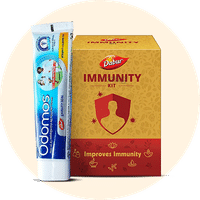Rs.194for 1 tube(s) (10 gm Cream each)
Available in other variants
food interaction for Livafin Cream
alcohol interaction for Livafin Cream
pregnancy interaction for Livafin Cream
lactation interaction for Livafin Cream
medicine interaction for Livafin Cream
food
alcohol
pregnancy
lactation
medicine
No interaction found/established
No interaction found/established
Livafin Cream is not recommended during pregnancy as there is positive evidence of fetal risk based on animal studies. However, it may still be prescribed by a doctor in situations where the benefits outweigh the risks.
CONSULT YOUR DOCTOR
Information regarding the use of Livafin Cream during breastfeeding is not available. Please consult your doctor.
CONSULT YOUR DOCTOR
No interaction found/established
SALT INFORMATION FOR Livafin 0.25% w/w Cream
Amorolfine(0.25% w/w)
Livafin cream uses
{med_name} is used in the treatment of fungal nail infections.
How livafin cream works
Livafin Cream belongs to a class of anti-fungal medications. It inhibits the enzymes that are essential for fungal growth, thereby killing a wide variety of sensitive fungi.
Common side effects of livafin cream
Skin rash, Erythema (skin redness), Nail disorder, Skin irritation
SUBSTITUTES FOR Livafin Cream
132 Substitutes
132 Substitutes
Sorted By
 Rs. 369.80save 40% more per gm of Cream
Rs. 369.80save 40% more per gm of Cream Rs. 265.30save 57% more per gm of Cream
Rs. 265.30save 57% more per gm of Cream Rs. 107.70save 47% more per gm of Cream
Rs. 107.70save 47% more per gm of Cream Rs. 210pay 2% more per gm of Cream
Rs. 210pay 2% more per gm of Cream Rs. 179.06save 9% more per gm of Cream
Rs. 179.06save 9% more per gm of Cream
Expert advice FOR Livafin Cream
- Amorolfine helps treat fungal nail infections.
- Avoid getting it in your eyes, ears, nose or mouth. If this happens, rinse with water immediately.
- Avoid the use of nail varnishes and artificial nails. Do not share your nail-filer to prevent the spread of infection.
- Do not use it if you are pregnant or breastfeeding.
- Keep using Amorolfine for 3 to 5 days after the symptoms of the infection have cleared up to prevent it from coming back.
Frequently asked questions FOR Livafin 0.25% w/w Cream
Amorolfine
Q. How often should you use Livafin Cream?
Livafin Cream contains amorolfine which is an antifungal medicine. It is used to treat fungal infections of the nails. It is applied once weekly on the affected finger or toenails. Sometimes your physician may ask you to apply it twice weekly. The affected areas must be cleaned and dried properly. Do not stop the treatment in between even if the symptoms heal. Your doctor will recommend the exact dose and duration of the treatment based on the type of fungal infection.
Q. Is Livafin Cream a steroid?
No, Livafin Cream is not a steroid. It is a medicine which is used to kill a wide variety of infection-causing fungus. It is applied on the affected nails to treat fungal infections.
Q. Can we apply Livafin Cream on other parts of the body?
No, this medicine should not be used on other parts of the body like the eyes, oral cavity, or intravaginally. Its use should be restricted to only nails and skin. Before using the medicine consult the doctor and follow the instructions carefully.














